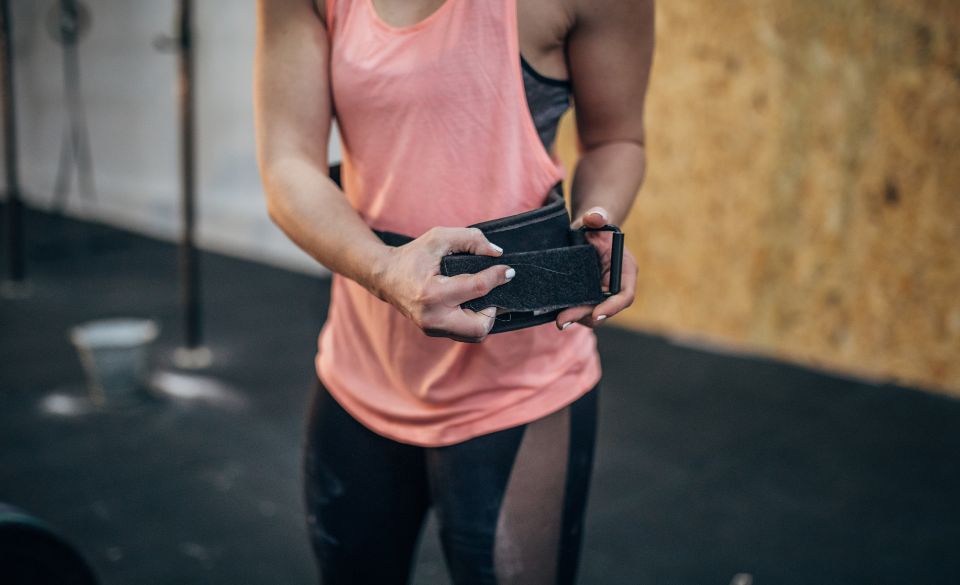
Should You Wear a Lifting Belt During Deadlifts
Page Contents
The deadlift is a fundamental exercise for strength and muscle development. As lifters aim to maximize performance and protect their lower back, the use of lifting belts has become a topic of debate. Some argue that wearing a lifting belt during deadlifts provides added support and stability, while others believe it may hinder natural movement patterns and weaken core muscles. In this article, we will examine the pros and cons of wearing a lifting belt during deadlifts, supported by relevant studies, to help you make an informed decision.
What is the purpose of a lifting belt
A lifting belt is a piece of equipment designed to provide support and stability to the lower back and abdominal region during weightlifting exercises. Its primary purpose is to increase intra-abdominal pressure, which helps stabilize the spine and reduce the risk of injury.
When performing heavy compound lifts like squats, deadlifts, and overhead presses, the spine is subjected to significant compressive forces. The use of a lifting belt aims to mitigate these forces and provide additional support to the core musculature.
Here are the key purposes of a lifting belt:
Increased Intra-Abdominal Pressure: Wearing a lifting belt during weightlifting exercises increases the intra-abdominal pressure. By bracing against the belt, the lifter is able to create a stable core and a rigid torso, which helps protect the spine. The increased pressure acts as an internal support system, reducing the stress on the lower back and improving lifting mechanics.
Spinal Stability: The core muscles, including the transverse abdominis, obliques, and erector spinae, play a vital role in maintaining spinal stability. When properly utilized, a lifting belt acts as a physical cue to engage these core muscles, reinforcing proper form and alignment. This can be particularly beneficial when performing heavy lifts that put a significant load on the spine.
Injury Prevention: The primary goal of using a lifting belt is to reduce the risk of lower back injuries during weightlifting exercises. By providing external support to the lower back, the belt helps limit excessive flexion, extension, or lateral movement, which can lead to strains, sprains, or more severe injuries. The added stability can be especially important for individuals with a history of back problems or those lifting heavy weights.
Confidence and Performance: Wearing a lifting belt can also contribute to increased confidence and performance. The added support and stability provided by the belt can give lifters the confidence to handle heavier loads, push through plateaus, and attempt maximal lifts. This can lead to improved performance and progression in strength training.
It’s important to note that a lifting belt is not a magic solution and should not replace proper technique, form, or training. It should be viewed as a tool to supplement proper lifting mechanics and reinforce core engagement. The belt is most effective when combined with a well-rounded strength and conditioning program that includes exercises to develop core strength and stability.
At what deadlift weight should you wear a belt?
Determining the appropriate weight to start using a lifting belt during deadlifts is a personal decision that depends on various factors. While there is no specific threshold or universally agreed-upon weight, here are some considerations to help you make an informed choice:
1. Experience and Training Level: Novice lifters who are new to deadlifting may benefit from initially focusing on developing proper form, technique, and core strength without relying on a belt. It’s crucial to establish a solid foundation before introducing additional support. As you gain experience and improve your lifting mechanics, you can gradually incorporate a belt if desired.
2. Individual Strength and Size: The weight at which you may consider using a belt can depend on your individual strength and body size. Generally, as the loads become heavier, and the strain on the lower back increases, some lifters may find it beneficial to use a belt for added support. It’s important to listen to your body and evaluate how the weight feels on your lower back and core stability.
3. Comfort and Confidence: The decision to wear a belt should also take into account your comfort level and confidence during deadlifts. Some lifters may prefer to wear a belt even with lighter weights to provide a psychological boost and a sense of security. Feeling confident and secure in your lifts can positively impact performance and help you maintain proper form.
4. Injury Prevention and Preexisting Conditions: If you have a history of lower back injuries or preexisting conditions that may increase your vulnerability to injury, you might consider using a belt at lower weights to provide additional support and reduce the risk of aggravating those conditions. Consult with a healthcare professional or a qualified strength and conditioning coach for personalized guidance.
5. Ultimately, the decision to wear a lifting belt during deadlifts should prioritize safety, proper form, and individual needs. It’s essential to remember that a lifting belt is not a substitute for developing core strength and stability. Instead, it should be seen as a tool to supplement your training when necessary. Experiment with different weights, gradually introducing the belt if desired, and always prioritize technique and form over relying solely on external support.
Why is it harder to deadlift with a belt?
While many lifters find that using a lifting belt can provide support and enhance their deadlifting performance, some may experience initial difficulty or perceive it as harder. Here are a few reasons why using a belt may feel more challenging for some individuals:
1. Adjusting to a New Sensation: Wearing a lifting belt introduces a new sensation and may alter the way you engage your core muscles during the deadlift. Initially, it can feel restrictive or uncomfortable as you adapt to the pressure and support provided by the belt. This adjustment period may require some practice and conscious effort to find a comfortable and effective bracing technique.
3. Changes in Technique and Motor Patterns: When wearing a belt, lifters often need to adjust their lifting technique slightly to accommodate the added support. This shift in technique may involve changes in posture, bracing strategies, or body positioning. Adjusting to these new motor patterns can initially make the deadlift feel more challenging or unfamiliar. With practice, however, lifters can adapt and optimize their technique while using a belt.
4. Increased Stability Demands: While a lifting belt provides external support to the lower back and core, it also encourages lifters to enhance their own stability through muscular activation. When wearing a belt, it becomes crucial to actively engage the core muscles to push against the belt and maintain a rigid torso. This increased demand for stability can make the deadlift feel more challenging initially. Over time, as you develop stronger core muscles and refine your bracing technique, the perceived difficulty may decrease.
5. Psychological Factors: The use of a lifting belt can have psychological implications that influence the perceived difficulty of the deadlift. Some lifters may become overly reliant on the belt for support, leading to a subconscious expectation that the lift will be easier with its use. When the belt is removed, it can create a mental barrier and make the deadlift feel more challenging without the perceived aid of the belt. It’s essential to strike a balance and not solely rely on the belt for support, but also focus on developing core strength and stability.
Remember, the difficulty experienced when deadlifting with a belt may vary among individuals. It is crucial to give yourself time to adapt, practice proper technique, and progressively load the lift. Gradually incorporating the belt into your training, while continuing to develop core strength, can help you maximize its benefits and minimize any initial challenges you may encounter.
Final Words – Should You Wear a Lifting Belt During Deadlifts?
When it comes to wearing a lifting belt during deadlifts, the decision ultimately depends on individual preferences and needs. While a lifting belt can increase intra-abdominal pressure, enhance spinal stability, and potentially improve performance, it should not replace proper technique and training. It is crucial to strike a balance between using a lifting belt for added support and developing core strength through targeted exercises. The appropriate weight to start using a belt varies, and it is influenced by factors such as experience, individual strength, and comfort. Additionally, while using a belt may initially feel harder due to adjustments in sensation, technique, and stability demands, with practice and proper adaptation, lifters can optimize their deadlifts while using a belt. Ultimately, consult with a fitness professional to determine if wearing a lifting belt aligns with your goals and needs, and always prioritize proper form and technique during deadlifts to minimize the risk of injury and optimize performance.



